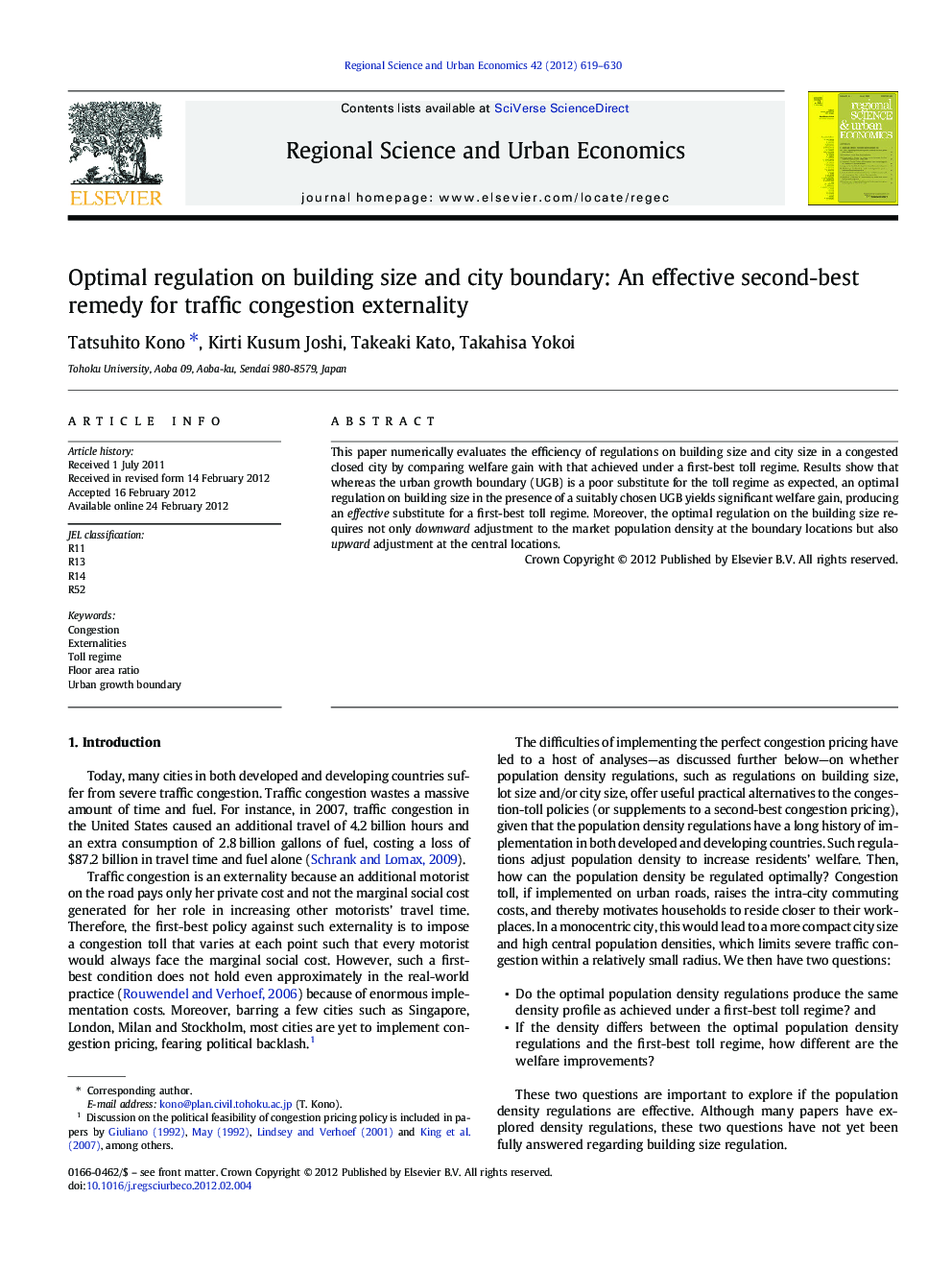| Article ID | Journal | Published Year | Pages | File Type |
|---|---|---|---|---|
| 983730 | Regional Science and Urban Economics | 2012 | 12 Pages |
This paper numerically evaluates the efficiency of regulations on building size and city size in a congested closed city by comparing welfare gain with that achieved under a first-best toll regime. Results show that whereas the urban growth boundary (UGB) is a poor substitute for the toll regime as expected, an optimal regulation on building size in the presence of a suitably chosen UGB yields significant welfare gain, producing an effective substitute for a first-best toll regime. Moreover, the optimal regulation on the building size requires not only downward adjustment to the market population density at the boundary locations but also upward adjustment at the central locations.
► We model a monocentric city with transport congestion. ► We numerically evaluate the efficiency of regulations on building and city sizes. ► Optimal regulations on building and city sizes yield a significant welfare gain. ► Regulation on building sizes can be an effective substitute for a toll regime. ► Regulation on only city size is a poor substitute for a toll regime, as expected.
